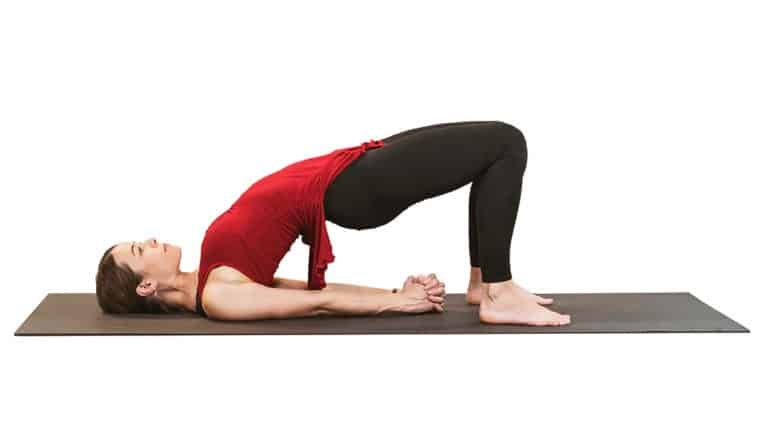In this article, we will explore the benefits of yoga for anger management, specific yoga poses and breathing exercises that can help, and how to incorporate yoga into your daily routine.
If you find yourself struggling with anger and its negative effects on your well-being and relationships, incorporating yoga into your anger management routine can be a powerful solution.
Yoga offers a holistic approach to managing anger by combining physical postures, breathing exercises, and mindfulness meditation.
Benefits of yoga for anger management
Reduces stress and anxiety
One of the primary benefits of yoga for anger management is its ability to reduce stress and anxiety. When we experience anger, our bodies go into a fight-or-flight response, releasing stress hormones that can lead to increased heart rate, elevated blood pressure, and tense muscles. Yoga helps counteract these physical responses by activating the relaxation response, which promotes a sense of calmness and reduces stress levels.
Promotes relaxation and calmness
Yoga promotes relaxation and calmness by focusing on deep breathing and gentle movements. The combination of physical postures and controlled breathing helps activate the parasympathetic nervous system, which is responsible for the body’s rest and digest response. This activation induces a state of relaxation, allowing you to let go of anger and find inner peace.
Increases self-awareness and emotional regulation
Practicing yoga regularly enhances self-awareness, which is crucial for managing anger. Through yoga, you learn to observe your thoughts, emotions, and physical sensations without judgment. This self-awareness enables you to recognize anger triggers and respond to them in a more controlled and constructive manner. By cultivating emotional regulation skills on the mat, you can transfer them to your daily life, leading to healthier anger management.
Yoga poses for anger management
Child’s Pose (Balasana)
Child’s Pose is a gentle resting pose that promotes relaxation and releases tension in the body. To practice this pose, kneel on the floor, sit back on your heels, and fold your torso forward, resting your forehead on the mat.
Extend your arms forward or alongside your body, whichever feels more comfortable. Stay in this pose for several breaths, allowing yourself to surrender and let go of anger.
Bridge Pose (Setu Bandhasana)
Bridge Pose is an energizing backbend that helps release anger and frustration. Lie on your back with your knees bent and feet hip-width apart.
Press your feet into the mat, lift your hips, and interlace your hands beneath your body. Roll your shoulders back and open your chest. Breathe deeply in this pose, feeling a sense of strength and stability.
Corpse Pose (Savasana)
Corpse Pose is a deeply relaxing pose that allows you to integrate the benefits of your yoga practice. Lie flat on your back with your arms by your sides and your legs extended.
Close your eyes and focus on your breath, allowing your body and mind to fully relax. In this pose, you can let go of any lingering anger and find a sense of peace and tranquility.
Warrior II Pose (Virabhadrasana II)
Warrior II Pose is a powerful standing pose that helps build strength and stability while promoting a sense of groundedness. Stand with your feet wide apart, turn your right foot out, and bend your right knee.
Extend your arms parallel to the floor, with your gaze over your right fingertips. Feel the strength and determination in this pose, channeling any anger into focused energy.
Tree Pose (Vrksasana)
Tree Pose is a balancing pose that cultivates focus and stability. Stand tall with your feet hip-width apart, shift your weight onto your left foot, and place your right foot on your left inner thigh or calf.
Bring your hands to your heart center or extend them overhead. Find your balance and feel a sense of rootedness, allowing any anger to dissipate as you connect with your inner strength.
Breathing exercises for anger management
Deep belly breathing
Deep belly breathing, also known as diaphragmatic breathing, is a simple yet powerful technique for calming the mind and body.
Sit or lie down in a comfortable position, place one hand on your belly, and the other on your chest. Take a deep breath in through your nose, allowing your belly to rise as you fill your lungs with air. Exhale slowly through your mouth, feeling your belly sink.
Repeat this deep belly breathing for several minutes, focusing on the sensation of your breath.
Alternate nostril breathing
Alternate nostril breathing is a balancing breath technique that helps harmonize the left and right hemispheres of the brain, promoting emotional balance.
Sit comfortably and bring your right hand to your face. Use your right thumb to close your right nostril and inhale deeply through your left nostril.
Then, close your left nostril with your ring finger and exhale through your right nostril. Continue this pattern, alternating nostrils with each breath, for several rounds.
Cooling breath (Sheetali Pranayama)
Cooling breath, also known as Sheetali Pranayama, is a breathing exercise that helps cool down the body and calm the mind. Sit in a comfortable position, roll your tongue into a tube shape, and inhale deeply through your rolled tongue.
Close your mouth and exhale slowly through your nose. If you are unable to roll your tongue, you can simply purse your lips and inhale through your mouth. Repeat this cooling breath for several rounds, feeling a sense of calmness and tranquility.
Mindfulness meditation for anger management
Body scan meditation
Body scan meditation is a mindfulness practice that involves systematically bringing attention to different parts of the body. Find a comfortable seated position and close your eyes.
Begin by focusing on your breath, then slowly shift your attention to different areas of your body, starting from your toes and moving up to your head. Notice any sensations or tension in each area and allow yourself to release any anger or discomfort.
Loving-kindness meditation
Loving-kindness meditation, also known as Metta meditation, is a practice that cultivates feelings of love, compassion, and forgiveness towards oneself and others. Sit comfortably and bring to mind someone you care about.
Repeat phrases such as “May you be happy, may you be healthy, may you be safe, may you live with ease.” Extend these wishes to yourself, loved ones, neutral individuals, and even those you may be angry with. This practice helps soften anger and fosters a sense of connection and understanding.
Observing thoughts and emotions
Observing thoughts and emotions is a fundamental aspect of mindfulness meditation. Find a quiet space and sit comfortably.
Close your eyes and bring your attention to your breath. As thoughts and emotions arise, simply observe them without judgment or attachment.
Notice any anger that arises and allow it to pass without getting caught up in the story or reacting impulsively. By observing anger from a place of mindfulness, you can gain insight and choose a more skillful response.
Incorporating yoga into your anger management routine
Set a regular practice schedule
To reap the benefits of yoga for anger management, it is essential to establish a regular practice schedule. Set aside dedicated time each day or several times a week to engage in yoga. Consistency is key in developing the skills and mindset necessary for managing anger effectively.
Start with shorter sessions and gradually increase
If you are new to yoga, it is advisable to start with shorter sessions and gradually increase the duration as you build strength and flexibility. Begin with 10-15 minutes of yoga and gradually extend the time as you feel more comfortable. Remember, even a short yoga practice can have a significant impact on managing anger.
Combine yoga with other anger management techniques
While yoga can be a powerful tool for anger management, it is beneficial to combine it with other anger management techniques.
Consider seeking therapy, attending anger management classes, or practicing relaxation techniques such as deep breathing or journaling. By integrating various strategies, you can create a comprehensive approach to managing anger.
Conclusion
Incorporating yoga into your anger management routine can provide numerous benefits for your physical, mental, and emotional well-being.
By reducing stress and anxiety, promoting relaxation and calmness, and increasing self-awareness and emotional regulation, yoga offers a holistic approach to managing anger. Through specific yoga poses, breathing exercises, and mindfulness meditation, you can find inner peace, release anger, and cultivate healthier responses to challenging situations.
Start your yoga journey today and discover the transformative power of yoga for anger management.
Originally posted 2023-03-11 16:41:46.









